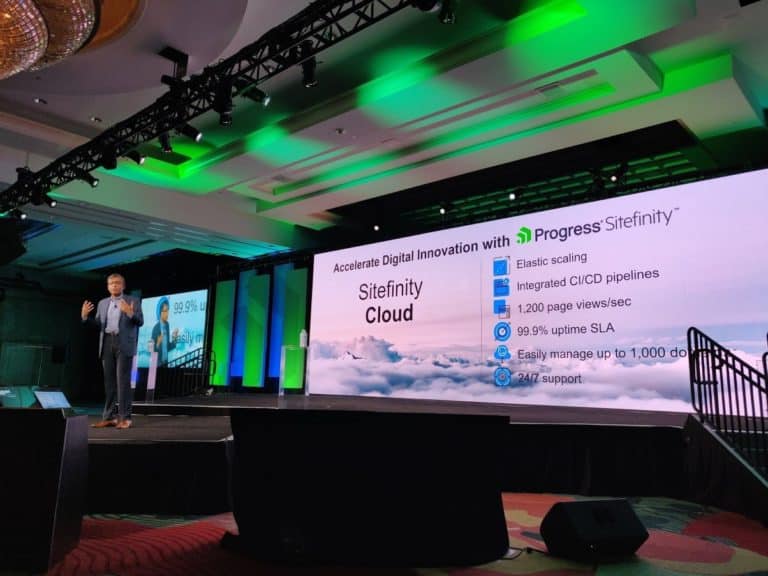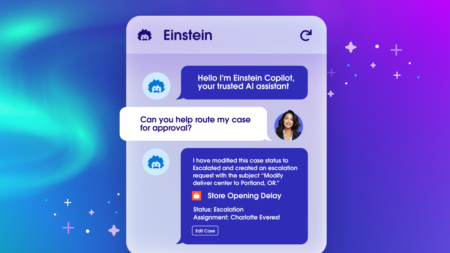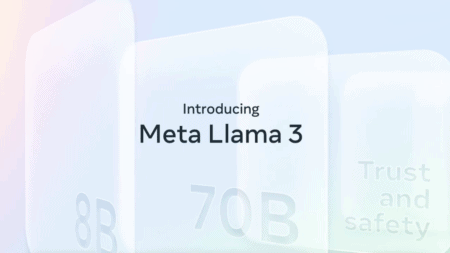App development specialist brings Sitefinity to the cloud with the latest version of the platform. Sitefinity 12 should enable further personalization of digital experiences in a service environment that reduces the workload of IT administrators and developers.
Progress is launching a new version of its Sitefinity-platform during Progress Next in Orlando, Florida. Sitefinity combines drag & drop content management with personalization of digital experiences, and version twelve now embraces the cloud. Progress now describes the web content management (WCM) platform as cloud native. Sitefinity 12 is the only WCM Platform-as-a-Service on the market today, we will hear at the event. In this way, Progress wants to take infrastructure management out of the customers’ hands. This should give the professional website platform an advantage over alternatives such as WordPress or Drupal. In his presentation, Progress mentions version 12 of the platform as ‘Sitefinity Cloud’.
Tailor-made experiences
Sitefinity makes it possible for organisations to offer tailor-made website experiences. The platform links content management to personalization based on visitor profiles. With Sitefinity 12, this aspect will be further expanded with, among other things, renewed dynamic forms linked to personas that support the individualization of the site to be displayed.
A multichannel approach should also ensure that marketers use the platform to approach customers and prospects in the right way across different touchpoints. A well-configured Sitefinity environment is also very user-friendly for non-technically skilled users, with drag & drop page creation and preview-less wyswyg capabilities that go beyond the competition.
Azure
For the leap to the cloud, the company is working closely with Microsoft Azure. That cooperation should come as no surprise. The CMS works via .Net and historically runs on Windows server environments, where competitors such as WordPress Linux servers are preferred.
The ambition is to let organisations focus on their core business, so that IT professionals have less time to spend on the operational management of the IT environment.
The ambition is to let organisations focus on their core business, so that IT professionals have less time to spend on the operational management of the IT environment. Progress is being made on the Azure DevOps lifecycle for this simplified management. Efficiency is also part of the foundation. The infrastructure can scale automatically, needs to be available 99.9 percent of the time, and is supported 24×7. Progress is of course dependent on Microsoft and Azure for its availability, which have already dropped the ball in the past year when it comes to the availability of their cloud solutions.
Adaptability
According to Progress, Sitefinity in the cloud must support up to 1,200 page views of a website per second. “By way of reference, that’s more than double what Amazon has to cope with today,” says Yogesh Gupta, CEO of Progress. The platform was developed with developers in mind, which is not surprising for a company that has been building tools for developers to develop their applications for almost four decades. Sitefinity 12 retains, among other things, central multisite management, simple multi-language support and an API central implementation. This focus should make it easier for developers to bring elaborate versions of websites to the market.
Our customers continue to develop. Their web content is increasingly focused on digital experiences, and we need to provide them with the tools they need,” said John Ainsworth, Senior Vice President of Process Core Products. With the new version of the platform, the company also wants to provide better support to marketers, since personalised digital experiences are of course particularly important in this context. The cloud native service approach allows developers and marketers to focus on fine-tuning those experiences.
The new version of Sitefinity is available immediately.
This news article was automatically translated from Dutch to give Techzine.eu a head start. All news articles after September 1, 2019 are written in native English and NOT translated. All our background stories are written in native English as well. For more information read our launch article.


















